This is a follow-up to the very popular post on 12 Essential British 1970s Folk-Rock albums.
The genre was not as big and popular as it should be, so with a couple of these, I may be stretching the “essential” label. But if you are heavily into collecting this stuff, you are going to want them all. I can’t just list Steeleye Span albums and nothing else, can I?
“Babbacombe” Lee came with some fancy packaging, including a fake newspaper. Ah, the heady days of vinyl!
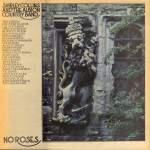 Shirley Collins and the Albion Country Band – No Roses (1971)
Shirley Collins and the Albion Country Band – No Roses (1971)

This is considered by some to be the album that really defined British electric folk — sure, Fairport Convention’s Liege and Lief got the ball rolling, and The Pentangle played a role, but this album sounds more “authentic” and true to the vibe of British country music. Not only is the massive cast of musicians a who’s-who of the British folk world (you name ’em, they’re probably here), but the super-authentic village-bred voice of Shirley Collins dominates the proceedings. The songs are, interestingly, mostly a bit spooky — there are two long, melancholy murder ballads, “The Murder of Maria Marten” and “Poor Murdered Woman”, played with medieval solemnity; the songs rock, but in a very dignified fashion. There are some lighter moments, such as “The Little Gypsy Girl”, “Just as the Tide Was Flowing”, and “Hal-an-Tow”, later rocked up by The Oyster Band. Overall, there’s a sense of history and mystery hanging over this album, which may well be the finest that impresario bassist Ashley Hutchings (founder of Fairport, Steeleye Span, and the various incarnations of this band) ever put together. It’s a statement of intent and a manifesto for a musical movement that unfortunately had less impact than it deserved.
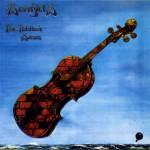 Dransfield – The Fiddler’s Dream (1976)
Dransfield – The Fiddler’s Dream (1976)

The Dransfield brothers, Robin and Barry, turn up on a number of classic British folk and folk-rock albums such as Morris On, some Sandy Denny albums, and so on. This one-off rock band album is quite good and seems to represent part of the effort to move away from just doing electric versions of folk songs, but instead writing, like Richard Thompson and later John Tams, contemporary songs with roots in the traditional to create a new British electric sound not dependent on US influences. As such, it’s quite successful and received a reissue on the revived Transatlantic Records on CD. The bros’ reedy voices and Barry’s energetic fiddling create a joyous mood, even when the material is more serious and topical, like the socialistic “Up to Now” and “What Will We Tell Them.” There are also some great fiddle tunes, as would be expected, and some updated takes on traditional ballad styles such as “The Alchemist and the Peddlar“. And not one trace of bluesiness to be found elsewhere, which is good. The genre had to distinguish itself by sounding … British!
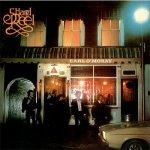 Five Hand Reel – Earl O’Moray (1978)
Five Hand Reel – Earl O’Moray (1978)

Five Hand Reel was basically the Scottish Fairport, creating a Scots-based folk-rock sound; Scottish traditional music has a sound and rhythm all its own characterized by the rhythm of the “Scottish snap”. Other bands ploughed the same fields, such as Runrig and the JSD Band, but this lot sound the most “electric-folk” authentic — despite being partially composed of Englishmen! This album is considered their best, produced by Simon Nicol of Fairport Convention. Revered Scots singer-songwriter Dick Gaughan was the singer at this time, and he dominates these proceedings. This album is rich n’ redolent with the mid-tempo, minor-key majesty of Scottish balladry, as in Gaughan’s definitive rendition of “My Love is Like a Red, Red Rose“. Hell, even the danceable tunes have that thumpiness and riffiness that makes Scottish music so appealing. There’s also some really atmospheric acoustic work, though, too, on the reverby, almost acid-folk “Earl O’Moray”. Fiddles and mandolins add the trad to the sound (no pipes here). It’s a pity more folk-rock fans aren’t familiar with this wonderful album.
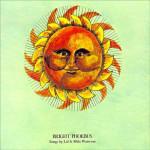 Mike and Lal Waterson – Bright Phoebus (1972)
Mike and Lal Waterson – Bright Phoebus (1972)

This album was and is still considered something of a curiosity. Mike and Lal are sibling members of the famous a cappella singing family that did so much to revive unaccompanied British group singing. However, hanging about with folk-rock stars gave these two the idea of writing their own material. And what strange material it is! There’s almost an outsider-art feeling to this album, like the two are trying to master the idioms of rock song but failing — gloriously! They sing in those rough, nasal, wavering, unaffected country voices atmospheric, quite surrealistic, and often creepy material like “The Scarecrow”, “Fine Horseman” and “Child Among the Reeds”. There’s also some not so successful music-hall type material such as “Rubber Band” and “Danny Rose”, but that can be overlooked because of the rest of the rough, windswept beauty to be found here. The backing is of course drawn from Brit folk-rock royalty, Hutchings, Thompson, Martin Carthy, etc. This album is more than just a curiosity; it’s possibly one of the purest expressions of British culture I’ve ever heard. It might not be for everyone, but you can’t say it sounds like anything else.
 Hedgehog Pie – The Green Lady (1975)
Hedgehog Pie – The Green Lady (1975)

I suppose Hedgehog Pie is very much a second-tier band that few people would heard of unless they are aficionados of this genre. But the band actually released several albums, which are quite good, very much in the Fairport ouevre, but with more of a Celtic feel at times. Hedgehog Pie’s leading lights on this album were singer Margi Luckley, who has a commanding and powerful voice, and multi-instrumentalist Martin Jenkins (also of Dando Shaft). Michael Doonan’s flute isn’t a sound heard often found on British bands’ albums, though it was an important part of Horslips’ sound. The sound quality isn’t the best but the playing, singing, and songwriting are quite good, if not at the Richard Thompson or Maddy Prior level. “The Gardener” is a pleasant mid-tempo number, and there’s some almost psychedelic action in several places, such as on the trippy “Camlaan Battle” and “Forest Child”; that adds a certain distinct edge to the proceedings and not that different to the sound of another second-tier band, Spriguns. I wouldn’t say there’s anything really special about this album in terms of being radical or groundbreaking, but the genre was so small and contained that the discovery of any smaller treasures from that era should be welcome to listeners.
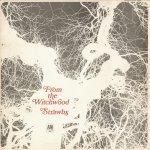 Strawbs – From the Witchwood (1971)
Strawbs – From the Witchwood (1971)

Strawbs became best known as a prog band with classic albums like Hero and Heroine and Ghosts, but they started off in bluegrass and then did a sort of psychedelic/mysticism-influenced folk-rock (Grave New World is probably their finest classic album) for a while. Dave Cousins is one of the most gifted songwriters the UK has ever produced. This album contains no traditional music, but I include it here because, importantly, the imagery and the feel of the album are VERY English, and that was unusual enough. Cousins lets his idealism and his imagination soar on songs like the viciously honest animal rights diatribe “Sheep” and the equally viciously anti-war/sectarian violence condemnation, “The Hangman and the Papist”, but there’s also the spooky “Witchwood“, gently nostalgic “In Amongst the Roses” and idealistic pastoral Christian, Blake-ean imagery of “A Glimpse of Heaven”. Ably supported by second singer/guitarist Tony Hooper, future famous prog keyboardist Rick Wakeman and future Hudson-Ford/Monks pop hitmakers Hudson and Ford on bass and drums, Cousins presents a tapestry of English poetic imagery that is unflinching in its commentary but also celebrates the beauty of the land and its history. This is a true classic.
![10 More Essential British 1970s folk-rock albums Steeleye+Span+-+[1972+ENG]+-+Below+The+Salt](//m5.paperblog.com/i/154/1545992/10-more-essential-british-1970s-folk-rock-alb-L-QYyl6I.jpeg) Steeleye Span – Below the Salt (1972)
Steeleye Span – Below the Salt (1972)
![10 More Essential British 1970s folk-rock albums Steeleye+Span+-+[1972+ENG]+-+Below+The+Salt](http://m5.paperblog.com/i/154/1545992/10-more-essential-british-1970s-folk-rock-alb-L-QYyl6I.jpeg)
I did a long review of this, so I will paraphrase some of it here: Steeleye Span and Fairport Convention were the most successful folk-rock bands, and Steeleye probably made the most dough. This album is their finest. It spawned a “novelty” hit, “Gaudete“, very likely the only time an example of medieval a capella music has hit the charts! They somehow made a time machine from the grooves of this record that transports you back to the epoch of the songs in a way that I just haven’t heard before. “Spotted Cow” is a jaunty tale of a sexy meeting in the fields. A grand example of Watersons-style polyphony, “Rosebud in June” is a pagan-style evocation of the summer with just the right amount of reverb behind the vocals. The complex horror ballad “King Henry” is a monumental achievement. The band wrenches every drop of drama from it, from the spooky a capella opening to the hard rock chords underneath the verses. After all this greatness, the majestic “Saucy Sailor” wraps things up. The song is a carefree evocation of the freedom of a wandering life and is great fun. This is THE album and definitely the album on which Maddy Prior establishes herself as the UK’s finest female folk singer (well, June Tabor can make that claim too).
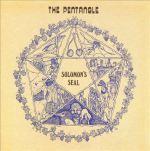 The Pentangle – Solomon’s Seal (1972)
The Pentangle – Solomon’s Seal (1972)

There wasn’t much “rock” in The Pentangle’s sound; the band was comprised of two blues-jazz acoustic players, a famous jazz bassist, and a session drummer, in addition to a crystalline singer who switched between jazz and trad folk. But they did very well, and really helped introduce traditional songs to the pop-consuming public. And they did add some electric instruments, gradually, over the course of a few albums. This was their last before their first break-up, and it’s a typically assured mixture of British and American material. I’ve chosen this because there balance is a little more heavily weighted in favour of the UK. John Renbourn and Bert Jansch’s magical guitar interplay has never sounded better than on “The Cherry Tree Carol“, and Renbourn’s sitar adds a mystic element to “The Snows”. The band also does beautiful renditions of “Willy O’Winsbury” and “High Germany” amongst their low n’ lazy renditions of bluesy American standards and Jansch’s original compositions. Jacqui McShee’s high-pitched scatting in the background is something of an acquired taste, but on the whole The Pentangle plays every kind of music with class and skill, so I did feel obliged to include them on this list, despite the lack of “rock” in their sound.
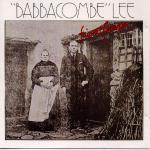 Fairport Convention – “Babbacombe” Lee (1971)
Fairport Convention – “Babbacombe” Lee (1971)

As the best known folk-rock band, Fairport has the best-known discography, too — but few of their albums are unflawed. Some are classics, some are frankly quite awful. And then there’s this rather interesting piece of work. After the departure of Richard Thompson, the band’s primary songwriter and guitarist, Fairport got to its feet with the middling Angel Delight, which is a pretty good album. Then they got ambitious! It was the era of the concept album, and bassist Dave Pegg and fiddler Dave Swarbrick conceived of this bizarre based-on-a-true story tale about a nineteenth-century man (possibly innocent) who escaped hanging by sheer luck and mechanical failure. And that’s the story! So it traces his early life, the accusations, sentencing, and then freedom. It’s something of a commentary on the class system. And quite affectingly, I must say. There’s traditional stuff (“The Sailor’s Alphabet”) but also psychedelia (“Dream Song”), energetic rock n roll (“John Lee”), and sorrow (“The Time Is Near”), all delivered quite confidently by Messrs Pegg, Swarbrick, Mattacks, and Nicol. You’d think the weird concept might not work over the course of an entire album, but it actually perfectly fits the band’s aesthetic. And the LP came with some really snazzy booklet packaging.
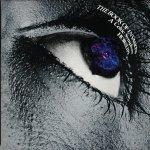 Horslips – The Book of Invasions (1976)
Horslips – The Book of Invasions (1976)

Horslips created Irish folk-r0ck and to some degree can be credited with launching rock n’ roll as a business in the country as a whole. The Tain is Horslips’ best-known folk-rock album (they also did fairly straightforward rock, and later, new wave), but this may actually be the superior album; The Tain had lots of interesting ideas and rocked pretty hard at times, but this later album has better songs, and it’s a more polished production overall. The band tackled another Irish myth cycle for source material, the Leabhar Gabhála Éireann, and retells the stories through such barn-burners as the classic “Trouble With a Capital T” and “The Power and the Glory”, but this album contains some of band’s most beautiful and melodic mid-tempo stuff as well, such as the majestic “Rocks Remain” and “Sideways to the Sun”, as well as the anthemic “Warm Sweet Breath of Love“. Like The Tain, this album feels more like a statement of pride and intent for a whole culture rather than just a set of fun rock songs. Additionally, lead guitarist Johnny Fean is a hell of a bluesy player, and each band member that takes lead vocals has never sounded better. An excellent intro to the band for newbies.



